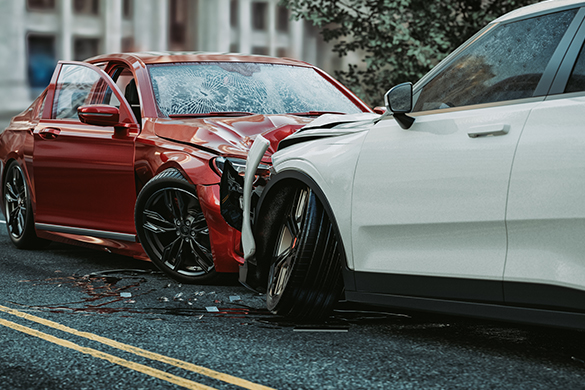Yes, median barriers are designed and constructed to prevent car accidents or at least reduce the severity of crashes, but they can also become the cause of car crashes. These median barriers, also known as “safety barriers,” separate lanes of traffic traveling in opposite directions.
“Median barriers, which can be made of a variety of materials, are installed on roads and highways to prevent vehicles from crossing the median strip and colliding with vehicles traveling in opposite traffic lanes,” explains our Pittsburgh median barrier accident attorney at Shenderovich, Shenderovich & Fishman.
BENEFITS AND DANGERS OF SAFETY BARRIERS ON OUR ROADS AND HIGHWAYS
Besides protecting motorists from head-on collisions, which are arguably the deadliest type of car accidents, median barriers are also designed to slow vehicles down by absorbing some of the energy and reducing the impact.
While it might seem that median barriers are the best invention ever to keep motorists safe, do not be fooled by the benefits of these barriers. Sure, they prevent thousands of car crashes each year, but, at the same time, they serve as the cause of deadly and catastrophic motor vehicle accidents when these median barriers are defective, damaged, faulty, improperly installed, poorly constructed, or inadequately designed.
TYPES OF MEDIAN BARRIERS
The consequences of crashing your vehicle into a median barrier depend on the type of the barrier:
- Rigid barriers. In Pittsburgh and elsewhere in Pennsylvania, local authorities usually install rigid barriers, which are made of concrete, on busy roads and highways with a high-speed limit. These safety barriers absorb very little energy from impact, which makes them very dangerous to collide with (in other words, rigid median barriers are responsible for some of the worst injuries and deaths).
- Semi-rigid barriers, also known as guardrails. These safety barriers are more prone to be moved or broken by vehicles that strike them. Therefore, a motorist is much more likely to break through a semi-rigid barrier and travel into opposite traffic lanes than a rigid barrier, though guardrails do absorb some energy from the impact.
- Cable barriers. These are the easiest and least expensive barriers to erect, but they are also the most penetrable of all types. They do absorb some energy from the impact, but a vehicle is very likely to break through this type of barrier.
CONSEQUENCES OF A MEDIAN BARRIER ACCIDENT
Injuries in median barrier accidents range from minor to severe and life-threatening. The severity of injury in this type of crash depends on a variety of factors, including but not limited to:
- The type of safety barrier involved
- Whether vehicle A collided with vehicle B from oncoming traffic
- The speed at which the vehicles were traveling prior to the crash
- Whether the motorists were drunk or distracted at the time of the collision.
The vast majority of all median barrier accidents fall into three types of crashes: head-on collisions, rollover accidents, and run-off collisions. In some cases, the force created in a median barrier crash can cause the driver and/or passenger to be ejected from the vehicle.
Our experienced median barrier accident attorney in Pittsburgh says that in some cases, the injured party may be able to sue a public or government entity such as the city, state, county, or municipality if the safety barrier was not properly and adequately designed, installed, constructed, or maintained.
Do keep in mind that if you are up against a government agency, the road map for seeking compensation for your damages and losses changes a bit. It is highly advised to be represented by an experienced car accident lawyer to help you collect sufficient evidence proving the other party’s fault and help recover maximum compensation. Contact Shenderovich, Shenderovich & Fishman to get a free consultation. Call our offices at (412) 391-7610.

